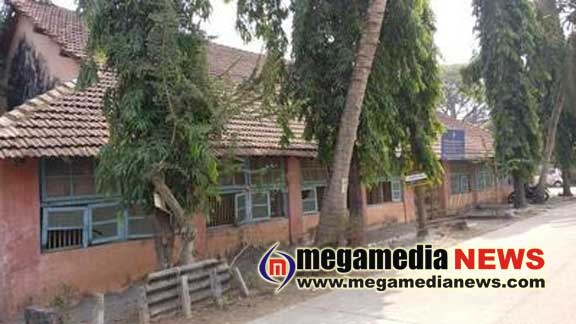Renovated old Customs House to become museum
11:50 AM, Monday, January 29th, 2018 Mangaluru: This coastal city is well on its way to having an exclusive customs museum. Mooted on the lines of the headquarters of Alfandega—as the customs administration was known in Goa during Portuguese rule till 1961, and converted into India’s first museum for customs and central excise, the office of superintendent of customs at Old Port, Bunder here, will also be renovated and made into a museum. It will serve as a treasure trove of information on the Customs.
Mangaluru: This coastal city is well on its way to having an exclusive customs museum. Mooted on the lines of the headquarters of Alfandega—as the customs administration was known in Goa during Portuguese rule till 1961, and converted into India’s first museum for customs and central excise, the office of superintendent of customs at Old Port, Bunder here, will also be renovated and made into a museum. It will serve as a treasure trove of information on the Customs.
The initiative is a brainchild of M Subramanyam, commissioner of customs, Mangaluru Customs Commissionerate. This 1889 building, which is at present in a semi-dilapidated state, will be fully renovated.
The CPWD has been entrusted this work, and funds to the tune of Rs 95 lakh have been released for the purpose, Subramanyam told on the sidelines of International Customs Day. “CPWD will float a tender for the purpose, and work will get under way shortly,” he said.
Marvelling at the strong walls of the 129-year-old building, Subramanyam said, “I have clearly instructed the CPWD not to touch either the walls or the tiled roof of the structure, during the renovation process.Mangalore tiles have given a distinct identity to the region, and this should be preserved for posterity,” he said.
He added that the CPWD, which recently undertook repairs of customs quarters, has the wherewithal and expertise to execute a project of this nature.
“We want to house various memorabilia, objects and other important documents that characterize the working of Customs to give people a sense of the work that the department does,” he said. He said the exact nature of the museum will be finalized as the renovation work progresses.
Incidentally, the Customs and Central Excise Museum at Goa displays some rare items seized from smugglers since Independence, and plans are afoot in this direction too.
The two-storey blue building, as the Portuguese had named its Customs headquarters in Panaji, is a heritage structure built in 1800. The blue building got its name from a major commodity traded during Portuguese rule from its port in Goa—indigo dye.
This building remained the Customs headquarters till 2002 when it was shifted to a new building. The museum has on display a priceless, handwritten copy of the Ain-e-Akbari, which was seized by customs officials in Patna.
Simillar Posts
Warning: count(): Parameter must be an array or an object that implements Countable in /home/megamcaq/public_html/wp-content/plugins/post-plugin-library/common_functions.php on line 357
- None Found
Leave a Reply
© Copyright 2008 www.megamedianews.com All Rights Reserved. Privacy Policy








 Posted in
Posted in  Tags:
Tags: 




